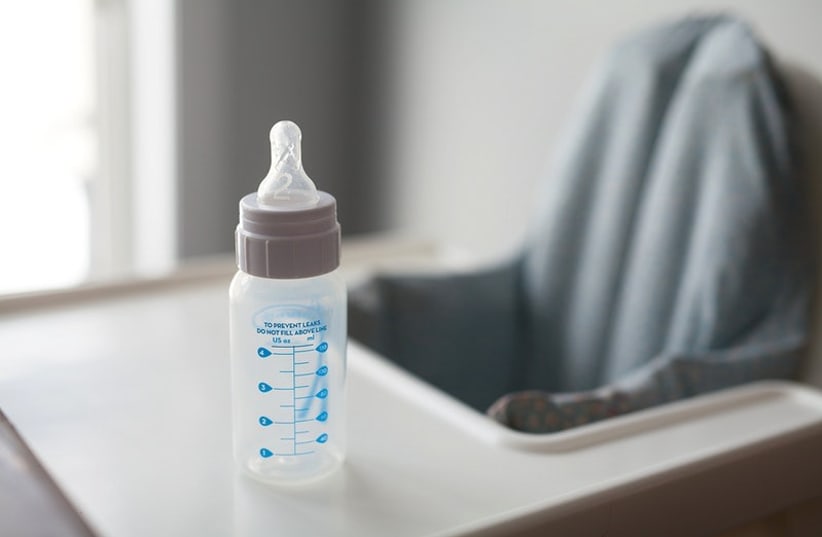Mazel Tov! You just gave birth and are still overwhelmed by this powerful experience. You’re both well and breathing normally, so now you can enjoy this magical time. You’re inundated with love hormones, feeling calm and attached to your newborn, and these feelings will help you move to the next step - the baby's adaptation to life outside the womb.
Anat Yaari, Breastfeeding Consultant and International Board Certified Lactation Consultant (IBCLC), who runs "Mother and Way", explains what’s expected of you and your baby after birth and what you should do to establish breastfeeding from the first moment.
Breastfeeding in the delivery room
In the delivery room, ask the midwife to place your baby on your body for skin-to-skin contact. This touch is so significant for both of you. Touching your skin allows the baby to regulate heartbeat, blood sugar levels, respiration rate and body temperature and get ready to start nursing. Babies use their first reflexes to reach for the breast and start sucking. For you, touch secretes breastfeeding hormones and helps you safely deliver the placenta.
Breastfeeding in the first hour after birth helps establish optimal milk production. If you’re separated from the baby in the first hours, extract the colostrum into a syringe for the first feed. Note that when you can hold your baby, you can return to the starting point, give it skin-to-skin contact and a chance to reach the breast.

Breastfeeding on the first day
On the first day, the suction patterns will be different and varied. The baby can sleep for several hours in a row after birth and then breastfeed for extended periods of time, or alternatively breastfeed for short periods of time followed by falling asleep for short naps. When the baby is next to you, you’ll learn to recognize and respond to cries of hunger.
The primary milk is called colostrum which is formed around the 16th week of pregnancy and is available after birth. The colostrum is thick and concentrated in antibodies and essential components for primary nourishment for a newborn. The small amount of colostrum is adjusted to the size of the stomach which at birth is about the size of a cherry, at one week it’s already the size of an apricot and at a month it will be the size of a ping pong ball or egg. Therefore, the amount of milk your baby needs will gradually increase.
So how much milk does the baby need in the first few days? Note: each ‘day’ is 24 hours.
First day: 2-10 ml per meal or 30-50 ml per day
Second day: 5-15 ml per meal and up to 150 ml per day
Third day: 15-30 ml per meal and up to 250 ml per day
Fourth day: 45-60 ml per meal and between 360-480 ml per dayFrom the sixth day to the age of two weeks: 45-75 ml per meal and between 550-700 ml per day
(These data are based on a lecture by Dr. Christina Smillie IBCLC at a 2011 meeting, and a lecture by Nancy Mohrbacher IBCLC 2016 as well as Protocol No. 3 of ABM).
What you should expect in the first few days
Between the second and fifth days, the fresh milk enters. Breasts will feel full, warm and slightly sensitive to touch, the milk will become less thick and its texture will change to liquid. The baby will be more active on the breast, swallowing will be heard during feeding and you’ll nurse 8-12 times a day, not necessarily at equal intervals. Sometimes nursing times will be long, if the newborn didn’t sleep that much. After several feeding times, a rhythm will be established and the baby will sleep longer.
Check urine output to be sure your newborn is getting enough milk and nutrients to start growing. From the end of the first week there should be 5-6 wet diapers per day and three diapers should have feces. The baby’s first few stools will be dark and thick as the body is getting rid of the meconium. Then, the poop will be softer and the color range is brownish-green to mustard yellow.
Problems
Breastfeeding is affected by various factors, some of which are related to the delivery - were there interventions in the process? Was your baby born on time and at what weight? Are there any background diseases? If you feel pain, if the breast feels clogged, if milk isn’t coming in regularly or the baby isn’t getting enough milk i.e. is fussy or just wants to sleep and doesn’t eat, get professional help immediately. Quickly establishing a smooth, regular nursing schedule is the key to successful breastfeeding.
This article was written in partnership with the JAMA parenting app.
